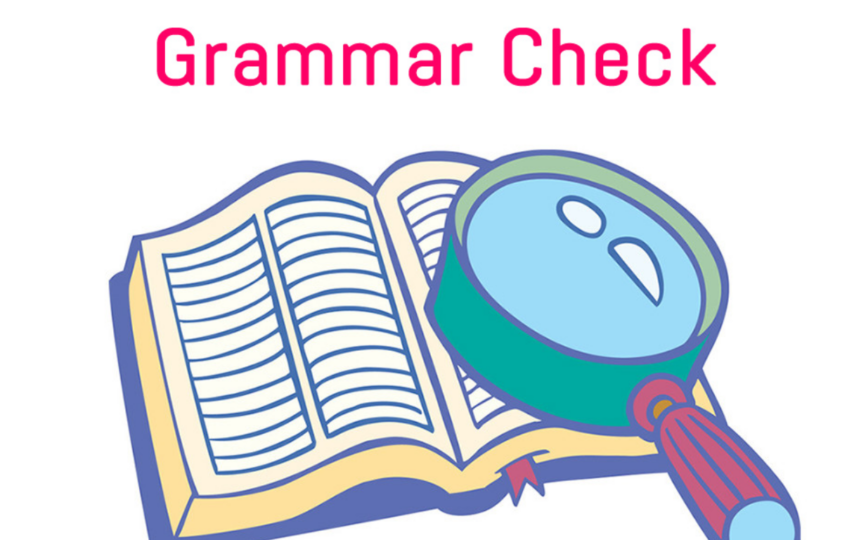The written word has always been a powerful tool for communication, and the evolution of grammar checking technology has played a pivotal role in ensuring the effectiveness of written communication. From its early days to the current state of advanced artificial intelligence (AI) systems, grammar checking has come a long way. Let’s embark on a comprehensive journey through time, exploring the past, present, and future of this indispensable aspect of our linguistic landscape.
Introduction
In the realm of effective communication, grammar acts as the backbone. The ability to convey ideas, thoughts, and information hinges on the proper use of language. Grammar checking technology, in essence, is a guardian angel for language enthusiasts, writers, and professionals who strive for linguistic perfection.
The importance of grammar cannot be overstated. It serves as a framework that organizes language, providing structure and clarity to written communication. Without proper grammar, the nuances of expression are lost, leading to misunderstandings and a breakdown in effective communication.
Early Days of Grammar Checking
The origins of grammar checking can be traced back to the early attempts to automate language correction. As the demand for efficient writing tools grew, the first grammar checking tools emerged. These tools were rudimentary, relying on rule-based systems to identify and correct basic grammatical errors.
However, the early days of grammar checking were not without challenges. The tools of this era struggled to comprehend the complexities of language, often flagging false positives or missing subtle nuances in context. Despite their limitations, these pioneering grammar checkers laid the groundwork for the technological advancements that would follow.
Rise of Digital Grammar Checkers
The transition from manual proofreading to digital grammar checkers marked a significant leap in the evolution of this technology. With the advent of computers and word processing software, grammar checking became more accessible to a broader audience.
Software-based grammar checkers became prevalent, offering writers a more efficient way to enhance their writing. These tools introduced spell-checking features, basic grammar suggestions, and, in some cases, style recommendations. Writers now had a digital companion to assist them in producing more polished and error-free content.
Current State of Grammar Checking Technology
Fast forward to the present day, and the landscape of grammar checking technology is vast and diverse. Numerous grammar checking tools are available, ranging from built-in features in popular word processors to standalone applications and browser extensions.
The current generation of grammar checkers boasts advanced features and capabilities. They not only correct grammatical errors but also analyze writing style, tone, and overall clarity. Integration with various writing platforms, including email clients, web browsers, and content management systems, has made grammar checking a seamless part of the writing process.
Impact on Writing and Communication
The integration of grammar checkers into our writing processes has had a profound impact on how we communicate. One of the most notable benefits is the improvement in language skills. As writers receive instant feedback on their grammar, spelling, and style, they have the opportunity to learn from their mistakes and refine their writing over time.
Moreover, the influence of grammar checking extends beyond individual writers. In professional and academic settings, the use of proper grammar is a hallmark of credibility and competence. Businesses, educational institutions, and individuals alike rely on grammar checking tools to ensure their written communication reflects a high standard of professionalism.
Challenges Faced by Grammar Checkers
Despite their advancements, grammar checkers are not without their challenges. Common errors, such as contextual misunderstandings and false positives, remain persistent. The risk of overreliance on technology poses a concern, with writers potentially neglecting their own critical thinking and proofreading skills.
The limitations of grammar checkers are most evident when faced with complex writing styles, industry-specific terminology, or creative expressions that fall outside conventional language norms. Striking the right balance between embracing technology and maintaining a discerning eye for language nuances is an ongoing challenge.
Artificial Intelligence in Grammar Checking
The advent of artificial intelligence has ushered in a new era for grammar checking. AI-powered grammar checkers leverage machine learning algorithms to understand context, detect subtle errors, and provide nuanced suggestions. Unlike their rule-based predecessors, these AI-driven tools can adapt to individual writing styles and evolving language trends.
Advancements in machine learning have enabled grammar checkers to go beyond simple error correction. They can now offer insights into writing tone, consistency, and even provide recommendations for enhancing overall readability. The incorporation of AI has elevated grammar checking to a level where it can comprehend the intricacies of language, making it a more reliable and sophisticated tool.
The Future of Grammar Checking
Looking ahead, the future of grammar checking holds exciting possibilities. Predictions for future developments revolve around even more advanced AI capabilities. Imagine a grammar checker that not only corrects errors but also understands the writer’s intent, suggests improvements in line with the document’s purpose, and seamlessly integrates with various writing environments.
Integration with emerging technologies is another avenue of exploration. As augmented reality and virtual reality become more prevalent, grammar checking could evolve into a real-time, context-aware companion, providing on-the-fly corrections and suggestions as users create content.
The future may also witness a more collaborative approach to grammar checking, with AI and human proofreading working hand in hand. Striking the right balance between automation and human input will be crucial to harnessing the full potential of this transformative technology.
Balancing Automation and Human Input
While AI-driven grammar checkers offer remarkable capabilities, the importance of human proofreading cannot be overstated. Machines may excel at identifying patterns and suggesting corrections, but the nuanced understanding of context and intention is a distinctly human trait.
A collaborative approach that combines the strengths of technology and human intuition is likely to yield the best results. Writers can benefit from the efficiency and speed of automated corrections while relying on human proofreaders to provide a deeper level of scrutiny. This balance ensures that the final piece not only adheres to grammatical rules but also captures the subtleties of language.
Customization and Personalization
One of the promising aspects of the future of grammar checking lies in customization and personalization. Recognizing that one size does not fit all when it comes to writing styles, grammar checkers are evolving to offer tailored experiences.
Imagine a grammar checker that learns from a user’s writing habits, adapts to their unique style, and provides suggestions that align with individual preferences. Customization options may include the ability to set specific style guides, adjust sensitivity to certain grammar rules, and even integrate industry-specific terminology for specialized writing contexts.
Enhancing user experience through customization not only increases user satisfaction but also contributes to a more efficient writing process. As grammar checkers become more attuned to individual needs, writers can focus on expressing their ideas without the distraction of generic corrections that may not align with their intended style.
Educational Impacts
The integration of grammar checking into educational settings has both positive and negative implications. On the positive side, grammar checkers serve as valuable tools for students and educators alike. They offer real-time feedback, allowing students to learn from their mistakes and refine their writing skills over time.
However, the use of grammar checkers in education is not without controversy. Some argue that overreliance on automated tools can hinder the development of intrinsic language skills. Striking the right balance, therefore, becomes crucial. Educators must guide students on effectively using grammar checkers as learning aids while emphasizing the importance of understanding grammatical concepts independently.
User Tips for Effective Grammar Checking
Maximizing the benefits of grammar checkers requires a strategic approach from users. Here are some tips to enhance the effectiveness of grammar checking tools:
Understand the Tool’s Limitations:
Recognize that grammar checkers may not catch all errors, especially those related to context and intent. Be mindful of the tool’s limitations.
Actively Engage with Corrections:
Don’t just accept or dismiss corrections without thought. Actively engage with the suggestions, understand why they are made, and consider how they align with your writing style.
Seek Human Proofreading:
While grammar checkers are powerful, human proofreading adds an extra layer of scrutiny. Whenever possible, have your work reviewed by another set of eyes.
Use Grammar Checking as a Learning Tool:
View grammar checkers as learning aids. Instead of relying solely on corrections, use them as opportunities to understand and improve your writing skills.
Stay Informed About Language Trends:
Language evolves, and so do grammar rules. Stay informed about current language trends, style guides, and industry-specific terminology to ensure your writing remains relevant.
By adopting these tips, users can turn grammar checking from a passive correction tool into an active partner in the writing process. A thoughtful and informed approach ensures that the technology enhances, rather than hinders, the development of effective writing skills.
Evolving Linguistic Standards
Language is dynamic, constantly evolving to reflect societal changes, technological advancements, and cultural shifts. Grammar checkers must adapt to these changes and stay abreast of linguistic nuances to remain effective.
Adaptation to evolving linguistic standards involves continuous updates to the software’s algorithms, ensuring it recognizes and understands new words, phrases, and expressions. Furthermore, grammar checkers need to be sensitive to cultural considerations, as language norms can vary significantly across different regions and communities.
The challenge lies in striking a balance between enforcing established grammar rules and embracing the fluidity of language. An effective grammar checker should be a guide that respects the diversity of language while upholding fundamental principles of clarity and coherence.
Ethical Concerns in Grammar Checking
As grammar checking tools become more sophisticated, ethical considerations come to the forefront. Privacy issues related to data security and the responsible use of personal information deserve careful attention.
Grammar checkers often process vast amounts of text, which may include sensitive or confidential information. Ensuring the privacy and security of user data is paramount. Developers must implement robust encryption measures and transparent privacy policies to protect the information entrusted to grammar checking platforms.
Responsible use of grammar checking tools also extends to avoiding biases and discriminatory practices. Developers should continually strive to eliminate biases in algorithms that may disproportionately impact certain groups or perpetuate stereotypes.
Conclusion
In conclusion, the evolution of grammar checking technology mirrors the evolution of language itself. From the rudimentary tools of the past to the sophisticated AI-driven systems of the present, grammar checkers have become indispensable companions for anyone navigating the intricacies of written communication.
As we look to the future, finding the right balance between automation and human input will be key to harnessing the full potential of this transformative technology. The collaboration between AI and human proofreading, coupled with customization options that cater to individual writing styles, promises a future where grammar checking is not just a correction tool but a personalized writing companion.
The impact of grammar checking extends beyond individual writers, influencing professional and academic spheres. Businesses, educators, and individuals alike benefit from the assurance of clear and error-free communication.
FAQs
Is grammar checking technology foolproof?
While advanced, grammar checkers are not infallible. They may miss context-specific errors or provide suggestions that don’t align with the writer’s intent.
How can users avoid overreliance on grammar checkers?
Users can avoid overreliance by actively engaging with the correction process, understanding the tool’s limitations, and seeking additional proofreading from human eyes.
What role does AI play in the future of grammar checking?
AI is expected to play a significant role by providing more nuanced corrections, context-aware suggestions, and potentially integrating with emerging technologies for a seamless user experience.
Are grammar checkers suitable for educational use?
Grammar checkers can be valuable educational tools, but educators need to strike a balance between their use and the development of intrinsic language skills.
How can users contribute to improving grammar checking technology?
Users can provide feedback to developers, actively participate in customization options, and be aware of the evolving linguistic standards to contribute to the improvement of grammar checking tools.








